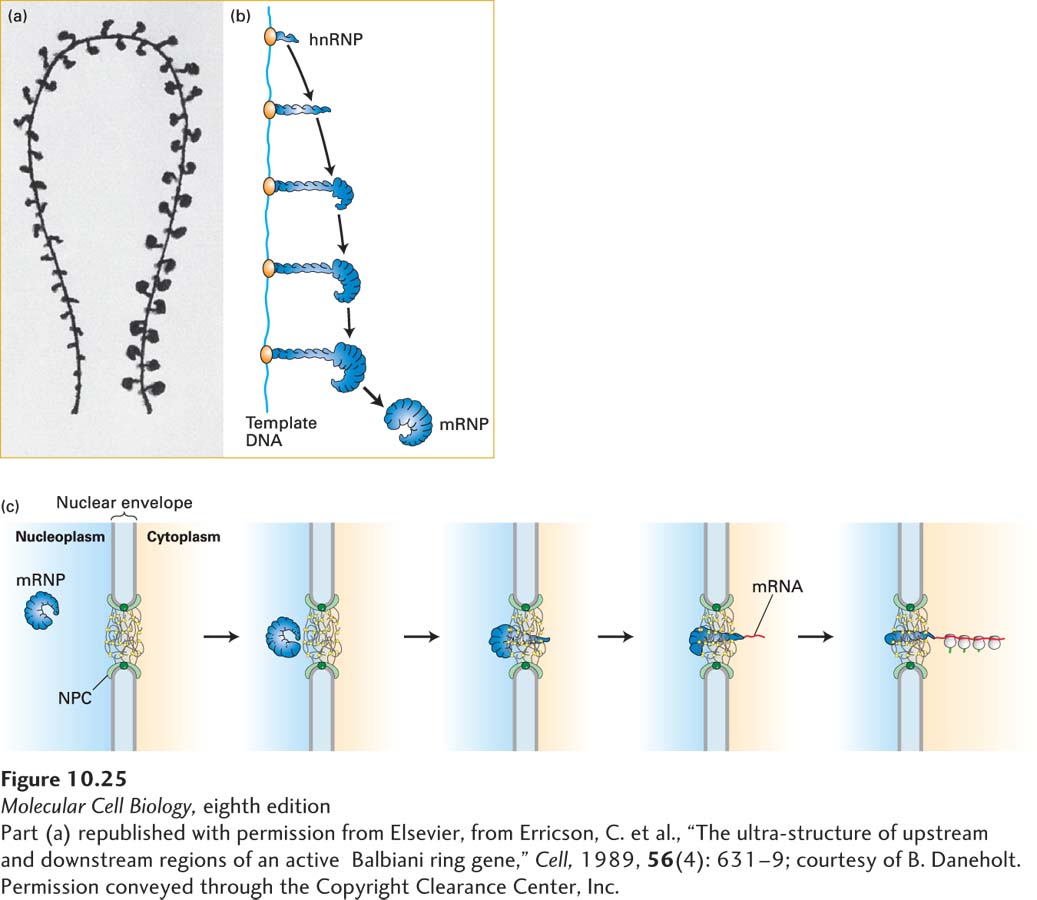
FIGURE 10- e-
[Part (a) republished with permission from Elsevier, from Erricson, C. et al., “The ultrastructure of upstream and downstream regions of an active Balbiani ring gene,” Cell, 1989, 56(4): 631–